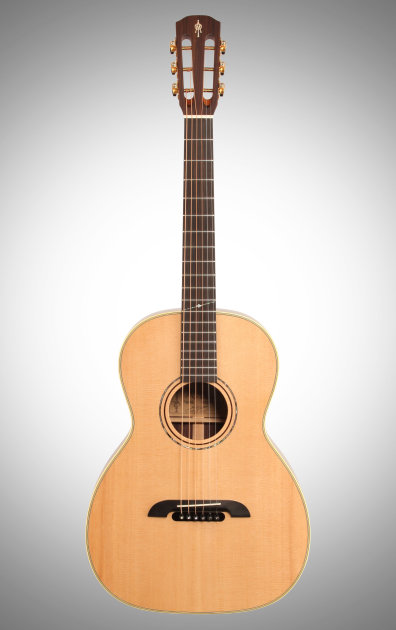A recent manufacturing trend in small-format mixers is to include features traditionally found in the domain of outboard or external processors. This design tactic has proven attractive to those who are looking for a console equipped with a modest graphic equalizer, some digital effects and, perhaps, even a crossover at a reasonable cost.
Product PointsApplications: Live sound, theater, installations
Service records, also known as dossiers, are the authoritative source of information about an individual's military service. Service records contain information about them on enlistment and throughout their military service. Serial Number Check. Check the serial number of your item: Have it Back incorporates nearly all freely available serial numbers. Utilizing this database, you can verify before or after purchasing an item if said object has been marked as missing or stolen.
Key Features: 16 mono channels with XLR inputs and inserts, onboard graphic EQ, digital effects and bass sub crossover/XLR output
Price: $1,099
Contact: Mackie Designs, Inc. at 425-487-4333 Web Site
Plus
+ Many comprehensive features found on higher-end Mackie boards
Your Mac’s serial number is a unique identifier that distinguishes your Mac from all others. You have to provide your Mac’s serial number when requesting warranty service. You may also want to look up your Mac’s serial number if you’re reporting it stolen. The easiest way to find your serial number depends on your situation. Kie Lookup Serial Number Of The AvidProtools bundle is available here: You need to the have the serial number of your mixer and he said it was free. Not sure if any of this will be helpful with my DL1608 as the tech said it was mostly for recording.
+ All channels are full featured
+ Good reverbs
Minus
– No channel mute LED
– No main mix channel assignments
The Score: A superb value with many features and capabilities.
From the manufacturer’s point of view, this opens up a new segment of buyer – someone on the cusp of a console purchase but who may be afraid to commit to something that requires additional purchases to properly outfit a system.
Never one to miss a trend, Mackie Designs has recently released the CFX group of consoles. These boards have many of the features found on Mackie’s SR and CM series boards, as well as a number of built-in outboard functions at a low price. Too good to be true? Knowing Mackie, maybe not. The company has a propensity for rattling the industry with innovation and “bang for the buck.”
Features
The CFX20 ($1,099) has 16 mono channel strips, two stereo-line channel strips, a master graphic EQ, an internal digital effects unit, four sub-groups and a bonanza of patching and I/O options. The chassis weighs 24.3 pounds and measures 25.6 inches wide, 16.2 inches deep and tapers from 5.0 inches to 2.1 inches high.
To users of Mackie consoles, the channel strip of the CFX20 should be familiar territory. Each of the 16 mono channels has an XLR microphone input, a balanced 1/4-inch input and a 1/4-inch insert jack. As with other Mackie boards, these inputs can handle a wide range of input signals and offer significant gain when needed. It should be noted, however, that this board does not have the improved XDR preamps found on most other current Mackie consoles.

In addition to the input trim control, the CFX has a 100 Hz high-pass filter that, when engaged, cuts low frequencies at 18 dB per octave. There is also a yellow signal LED that illuminates whenever it receives signal at or above 0 dBu.
Further down the channel strip are two pre/post-switchable aux sends, an external effects send (post fader) and a send for the CFX’s internal effects unit. The EQ section of each channel strip features a high-frequency shelving EQ (12 kHz), a peaking, sweepable mid EQ (100 Hz – 8 kHz) and a low-frequency shelving EQ that affects 80 Hz and below. Venturing downstream on these mono strips are a mute button, sub assignments (1/2 or 3/4), a solo button and a fader. The two stereo channels vary some from their mono counterparts. Being line channels, they have no XLR input. The EQ section features four fixed controls at 12 kHz, 3 kHz, 800 Hz and 80 Hz.

The master section on the CFX20 includes the board’s internal effects unit, a graphic EQ, sub group and master faders, as well as level controls for a wide variety of functions. The effects unit, which is fed by the EFX2 sends, features Mackie’s Extended Multiply and Accumulate (EMAC) technology.
Mackie Serial Number Lookup
The 32-bit processor provides 16 presets that feature reverbs, delays and modulation effects. There are parameter adjustment controls that allow delays and reverbs to be adjusted to taste, although these customizations cannot be stored for later use.
The effects section also has potentiometers for EFX 2 master send, EFX 2 to main mix, and EFX 2 to the two prefade monitor mixes, should you desire an effected monitor mix. There is also a bypass button for keeping between-song banter dry.
The console’s master graphic EQ is a stereo unit that features 9 adjustable bands. Adjacent to the EQ is a switch for global 48V phantom power, a 12-step LED ladder, a solo indicator LED, master sends for Aux 1, Aux 2 and EFX 1, an EFX 1 return, tape level, phones and utility level controls.
The CFX is also outfitted with Mackie’s popular Break Switch, which allows only the tape inputs to reach the main mix. There are four subgroup faders on the CFX20, each with left and right assignment buttons, and a master fader.
Like most other Mackie mixers, the CFX20 has a plethora of patching and output options. The main outputs can be accessed via balanced XLR and/or balanced 1/4-inch jacks. Unlike other Mackie consoles, the CFX has a balanced XLR sub output, which has an integrated mono-summing, 75 Hz third order low-pass filter.
This output, in keeping with the theme of the board, is designed to negate the need for an external crossover. The CFX20 also has a utility output that delivers the main mix (via an additional attenuation stage) on a pair of balanced 1/4-inch jacks. In addition, there are balanced 1/4-inch jacks for main inserts (left and right), sub outs (1 through 4), aux send (1 and 2), EFX send (1 and 2), stereo EFX returns (1 and 2), and headphone output. This section also has a 1/4-inch jack for a remote footswitch (to bypass the internal effects unit), a 12V BNC lamp socket, and stereo RCA inputs and outputs for tape/CD playing and recording.

In use
I work sound reinforcement jobs nearly every week and had numerous opportunities to use the CFX20. I used it in a variety of situations, including a small conference and some full band jobs.
With insert jacks on every mono channel, the CFX allowed me to apply individual compression and gating as I normally would. I found this inclusion to be a pleasant surprise since other boards in this price range would probably only put them on a few channels.
With good preamps, powerful EQ and flexible auxes, the channel strips on this board seem every bit as competent as the ones on its higher-priced siblings. I did find it somewhat curious that Mackie, and some other manufacturers, would put the knee point of the low-cut switch at a frequency above that of the channel’s low EQ. With the 100 Hz low-cut engaged, it seriously restricts the power of the channel’s EQ, which has a knee point of 80 Hz. I would think it should be the other way around – with the low cut being at 60 or 75 Hz and the channel EQ located at 100 or 125 Hz.
Mackie deserves kudos for equipping a board of this price with a good-sounding effects unit. The reverbs are believable and the unit is easy to use. While it is unfortunate that you cannot store parameter adjustments for delay times or reverb size, with its simplistic control surface, it was not that difficult to reorient things quickly. The master graphic EQ is adequate for adjusting the house mix to accommodate varying room conditions.
My biggest complaint with this console has to do with display rather than function. I found bothersome the omission of an LED to indicate channel mute status. I am accustomed to seeing a mute light when a channel is muted. Consequently, I mistakenly began a brief but frantic troubleshoot when I had no signal on an instrument channel that had been muted to change a direct box.
Although less bothersome, I was disappointed to find that channels cannot be assigned to the main L/R mix bus. They have to be assigned to a subgroup to reach the main outs. I am sure this function was omitted to keep costs down.
As with all other Mackie products, the manual is superb. It examines the controls and connections on the console in a detailed, articulate manner. And it does this while injecting comedic snippets that make it fun to read. I think the following description of a prefader aux application is priceless: “In prefader mode, you can take the drummer’s vocals out of the main mix by turning his fader down, but since he still hears himself in the monitors, he’s happy.”
Summary
Mackie Serial Number Lookup Free
Overall, I found the CFX20 a real pleasure to use. It has many of the traditional Mackie utilitarian features and it manages to squeeze in some nice outboard equipment in the process. This is a perfect purchase for someone looking to put together a PA on a budget while still retaining a modular nature and professional features.
Subscribe
For more stories like this, and to keep up to date with all our market leading news, features and analysis, sign up to our newsletter here.
How to find your serial number
I have a TAG Heuer WatchA serial number is unique to each TAG Heuer timepiece. Serial numbers play a crucial role in demonstrating both authenticity and ownership.
There are two numbers engraved on the caseback of your watch. One number is directly below the other. The bottom number is your serial number. It is generally comprised of two or three letters followed by four numbers. However, there may be exceptions (3 letters with 3 numbers or 6 numbers for certified chronometers).
A serial number is unique to each Richard Mille timepiece. Serial numbers play a crucial role in demonstrating both authenticity and ownership.
Richard Mille serial numbers are engraved on the bottom of the caseback of your watch. The serial number begins with the prefix 'RM' and is followed by a series of alphanumeric characters separated by spaces. Please note, there may be variations from the examples below including serial numbers that incorporate dashes (e.g. RM00-00 AA BB 00/00).
A serial number is unique to each Michael Godard artwork. Serial numbers play a crucial role in demonstrating provenance, authenticity and ownership.
Michael Godard serial numbers are comprised of a prefix of letters followed by numbers. The letters are generally an acronym for the artwork's title and the type of art. Michael Godard Originals feature handwritten serial numbers located on the back of the canvas. Serial numbers for Limited Editions can be found on the COA.
 I have National Geographic Fine Art
I have National Geographic Fine ArtA serial number is unique to each National Geographic | Fine Art Galleries photograph. Serial numbers play a crucial role in demonstrating provenance, authenticity and ownership.
Mackie Serial Number Lookup Service
National Geographic | Fine Art Galleries artwork serial numbers are comprised of a unique combination of alphanumeric characters. Generally, the serial number has a numerical prefix followed by letters and numbers.